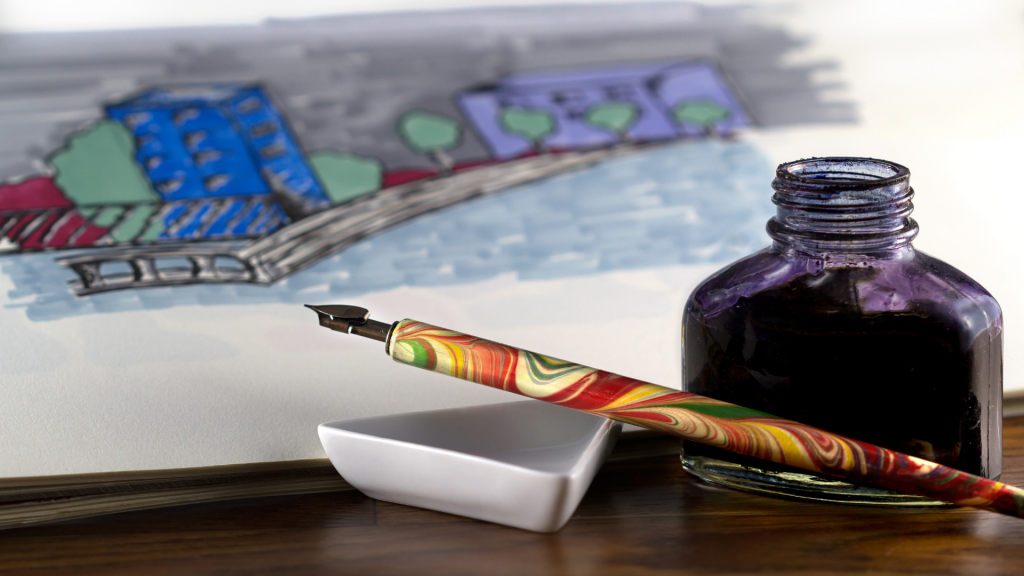 The first ink drawing on paper may have been made by a Neanderthal, but the story of India is one of the richest on earth. Over the last few centuries, we have seen Indian culture grow from a simple yet sophisticated agrarian society to a vibrant, diverse, and creative one. With so many varied trajectories, we must try to understand the evolution of India and its achievements, even if we do not completely understand them.
The first ink drawing on paper may have been made by a Neanderthal, but the story of India is one of the richest on earth. Over the last few centuries, we have seen Indian culture grow from a simple yet sophisticated agrarian society to a vibrant, diverse, and creative one. With so many varied trajectories, we must try to understand the evolution of India and its achievements, even if we do not completely understand them.
In this age of smartphones and computers, it’s getting harder to find a classic that’s ‘out of date,’ but Indian Ink certainly fits that bill. This book is over three centuries old yet reads just as effortlessly today as it did when it first came to light in the 1840s.
What is Indian Ink?
Ink is an ancient substance that has been used since antiquity for writing and drawing. The earliest ink forms come from the ancient Sumerians and ancient Egyptians, who used liquid dyes made from plants and animals. These inks were made from plant dyes and were eventually replaced by the more stable mineral ink made from metallic salts. Today, we will explore the world of Indian Ink, a type of ink derived from molasses. This ink is a type of waterproof ink created in the late 18th century and is a popular water-based ink used by artists and writers today. According to Indian Ink Museum, the ink was made from molasses by a scientist researching for a better waterproof ink. That means the ink has been around for almost two centuries.
Indian ink is a difficult medium to write with, even for the most skilled writers, and it’s not easy to create. The ink is a water-soluble layer of pigment mixed with gum and metallic particles. The mixture is applied to paper with a brush, and then the paper is dried. The dried ink remains very flexible and can be chiseled, scraped, or bent into any shape. After this, it is removed from the paper and dried again in order to harden. The final result is a permanent mark that can’t be rubbed out. The ink is a black and indigo mixture made up of 40% vegetable gum and metallic particles of cobalt, iron, copper.
Where Is Indian Ink Used?
Indian ink, or more commonly referred to as “bug chai” in India, is a traditional medium that has been in circulation since the 15th century. The process is a bit involved, but the result is a unique medium used to create fine images, yet is also employed for functional purposes such as writing on paper.
Indian Ink, the process of creating a black and white drawing by applying ink to paper, is one of the oldest traditional art forms of the world. It is thought to have originated in India around 1500 BC. The black and white drawing is commonly referred to as a sgraffito, and the process used to create the drawing is called “Indian Ink.” Along with this black and white drawing, the Indian Ink is often used to create the art piece. This is at the heart of Indian Ink, but the benefits don’t stop there. This versatile formula is composed of a multitude of pigments and binders that can be mixed and combined to produce a wide variety of colors and effects. Because the ink is marked with acid, it can also transform into an opaque white and even black when mixed with water.
Perhaps one of the oldest art forms in the world, the use of Indian ink has been around since ancient times. It is an ancient art form that has seen many changes and developments over the years. The use of Indian ink is still in use today and is often used by graphic designers, painters, and artists all over the world. The most common form of Indian ink comes in various sizes using a stick. While the rest of the world has moved on to ‘new’ techniques of painting, the art of Indian Ink remains as popular today as ever. Ink has been a part of art and craft history since the beginning of history. A painter, or a calligrapher, would use ink to make beautiful images. In the modern world, many people use ink to create their masterpieces.
